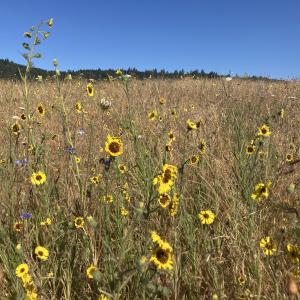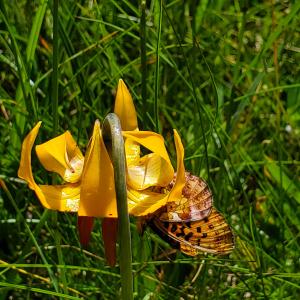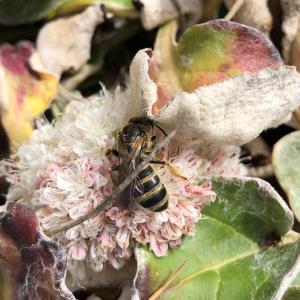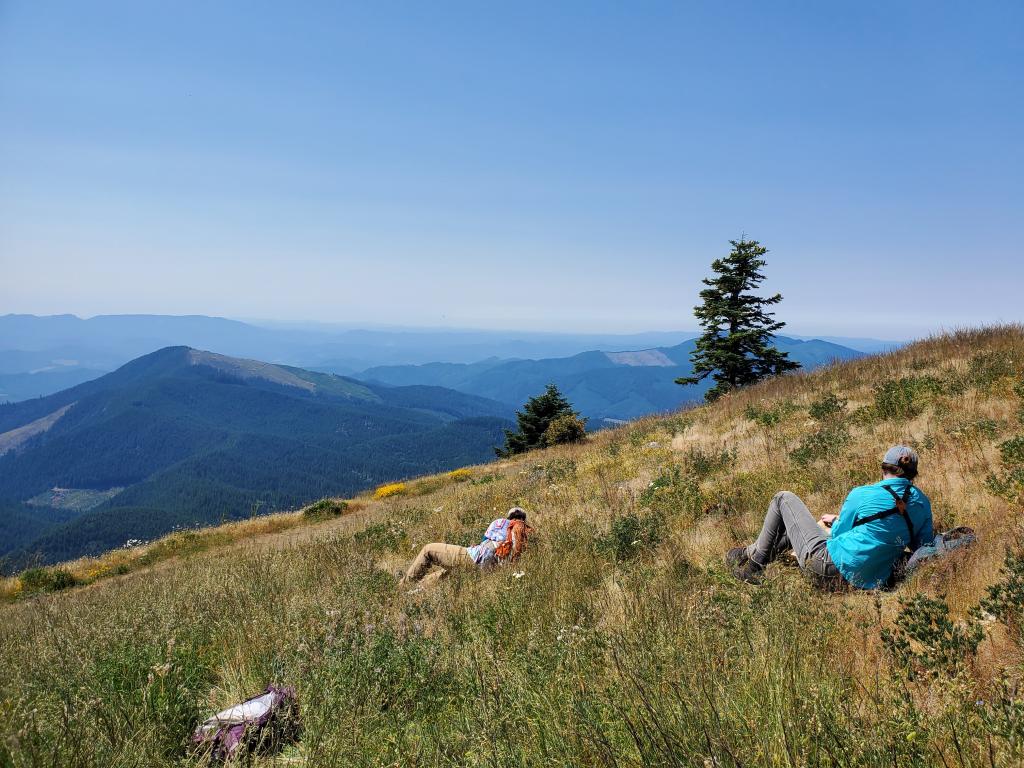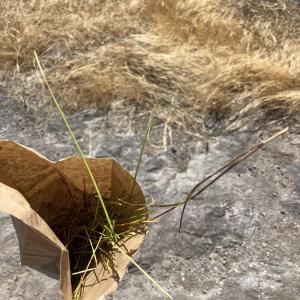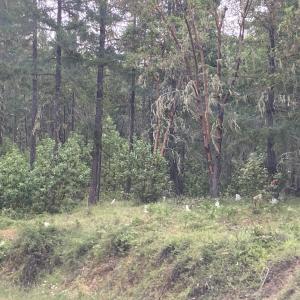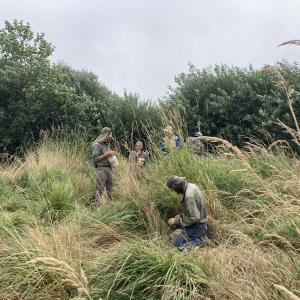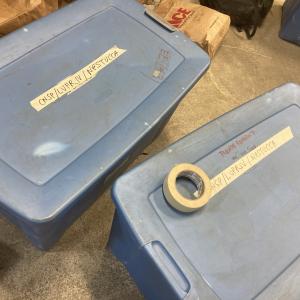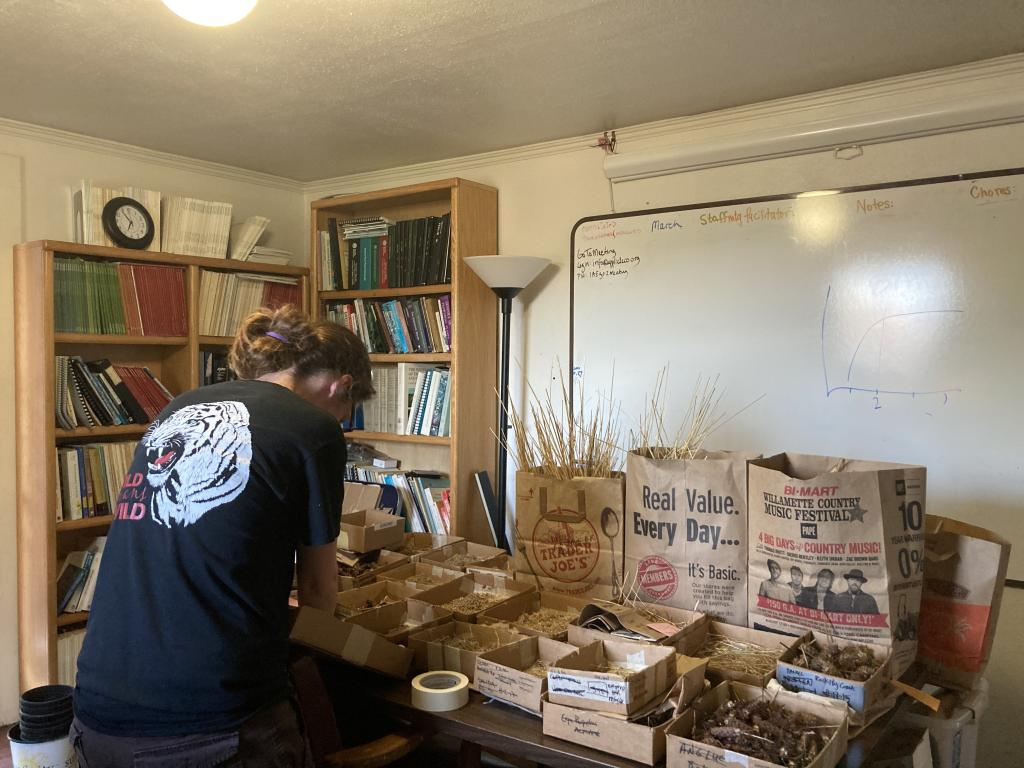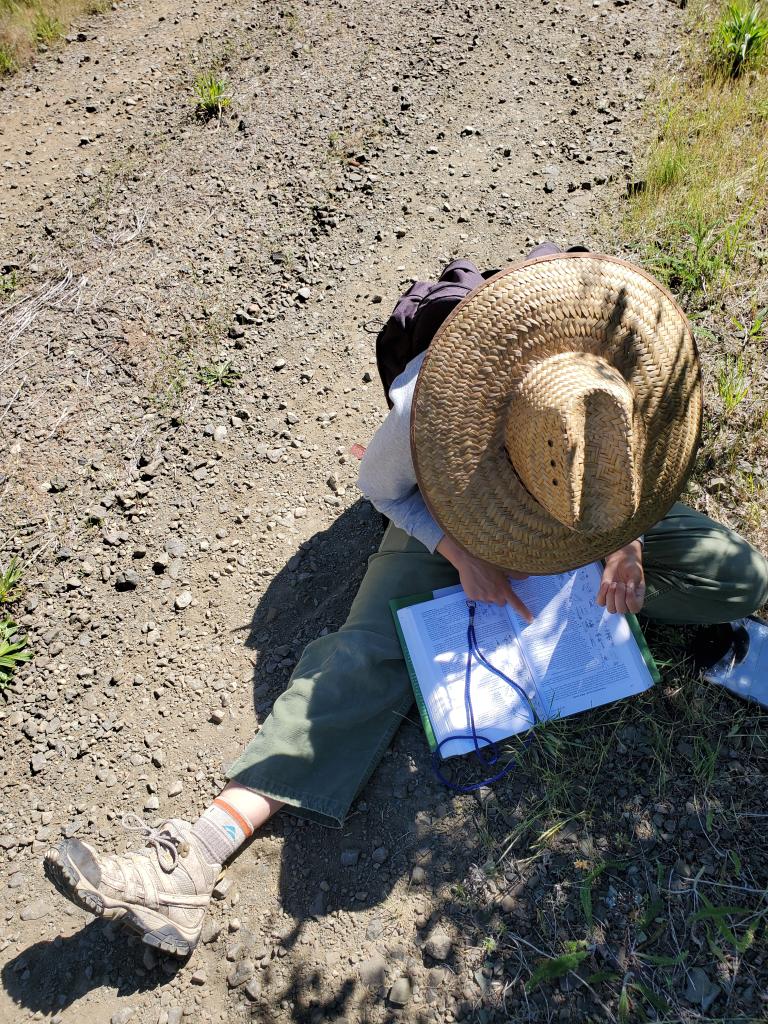By Emily Hayden and Sophie Linden
November 2022
Seed collection can’t be accomplished in a month, let alone a single season. Before and after a harvest is a long strand of thoughtful coordination meetings to develop target species lists, the actual on-the-ground scouting, and the detailed assessment of a population in its environment. This includes the plant rust you didn’t expect, the asynchronous fruiting from late season rains, the click of clickers, the puzzling thryses (flower clusters), and the length of a lemma. It’s the invertebrate that left its droppings but ate the seed, and, perhaps most importantly, it’s the community resources that yield a collective knowledge of a species distribution and its reproductive biology.
